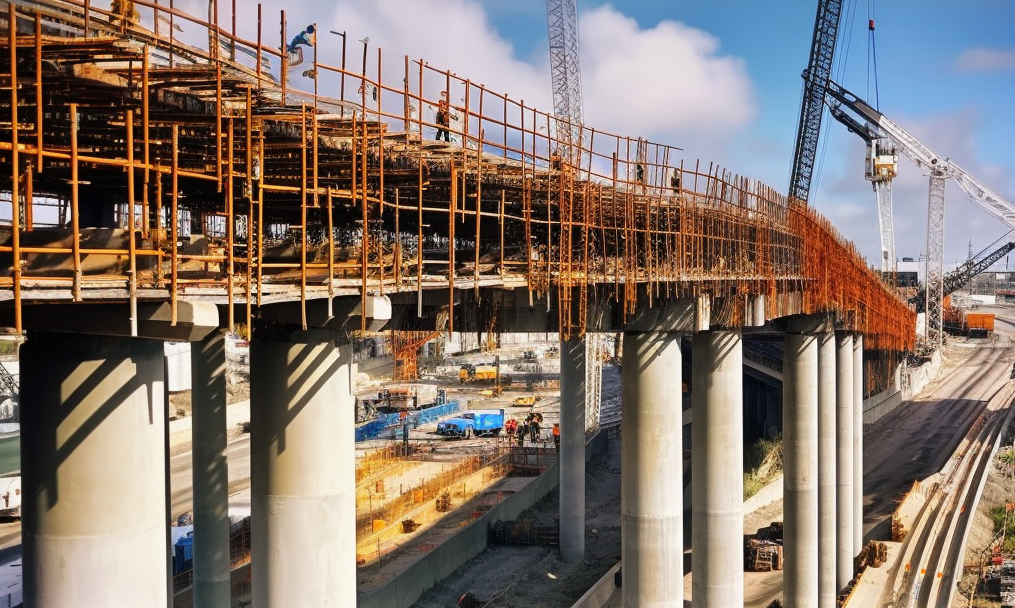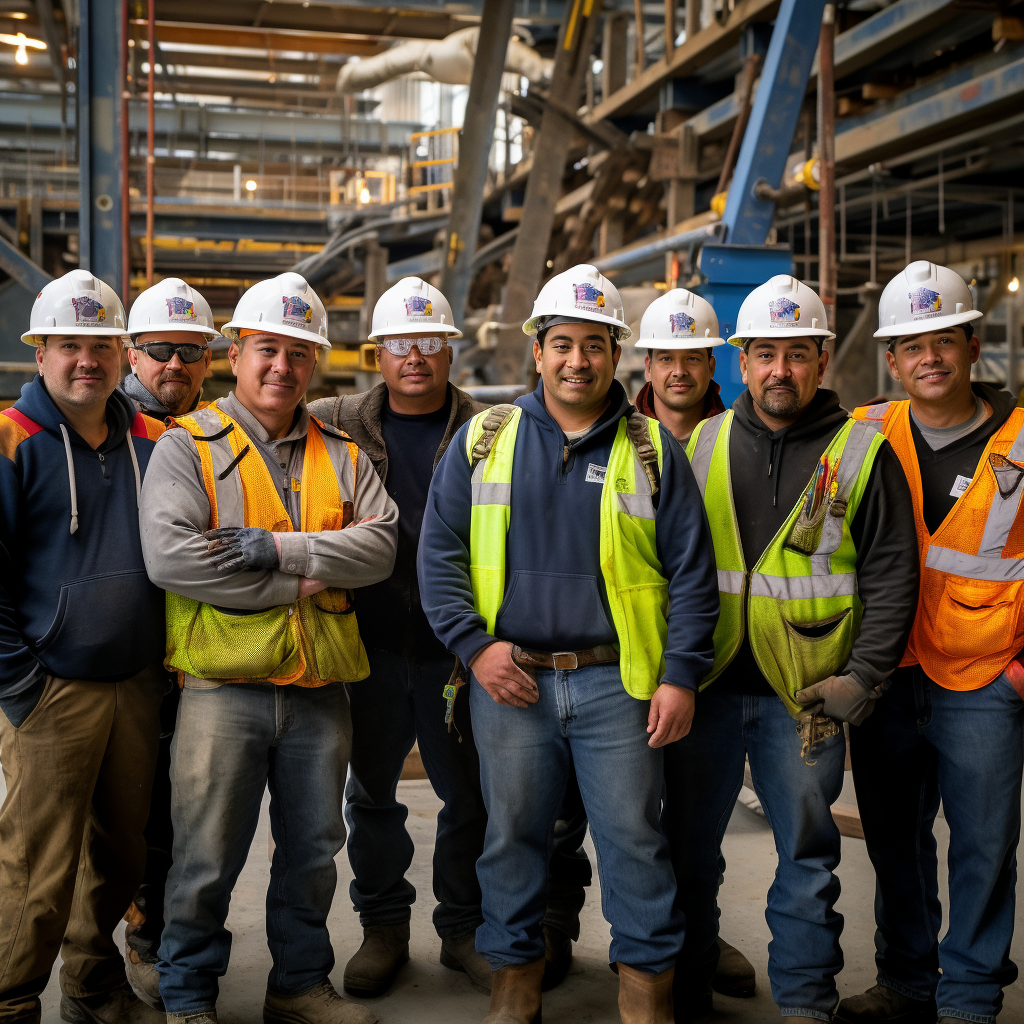In the world of construction, the strength of a structure lies not only in the materials used but also in the temporary supports that hold it together during the building process. One such support system is bridge falsework engineering, a crucial component in the construction of sturdy and reliable bridges.
Bridge falsework engineering involves the design and use of temporary structures to support a bridge until it can support itself. These temporary structures, known as falsework, provide the necessary support for the construction of various bridge components, such as arches, beams, and decks.
The importance of bridge falsework engineering in construction cannot be overstated. It ensures the safety of the construction process, the accuracy of the bridge design, and ultimately, the integrity of the finished bridge. Without expertly designed and implemented falsework, the construction of safe and reliable bridges would be a far more challenging endeavor.
Bridge falsework engineering is a specialized field that focuses on the design and implementation of temporary support structures used in bridge construction. These temporary structures, known as falsework, are crucial in supporting the bridge until its own structural elements are in place and strong enough to bear the load.
Falsework can take many forms, but it typically consists of a complex arrangement of steel or timber supports, braces, and scaffolding. The design of falsework must take into account a variety of factors, including the weight of the fresh concrete, the load-bearing capacity of the soil, wind loads, and even the weight of workers and equipment.
The role of falsework in bridge construction is akin to the role of a mold in sculpture. It shapes and supports the bridge during the critical stages of construction, then is removed once the structure is capable of standing on its own. Just as a sculptor relies on a mold to achieve the desired form, so too does a construction team rely on falsework to build a safe and sturdy bridge.
Bridge falsework finds its application in a variety of construction scenarios. Here are some common uses:
Supporting Bridge Overhangs: During the construction of bridge overhangs, falsework provides temporary support until the overhangs are strong enough to support themselves.
Temporary Decks: Falsework is often used to support temporary decks during bridge construction. These decks provide a platform for workers and equipment, facilitating the construction process.
Pier Caps and Columns: In the construction of pier caps and columns, falsework provides the necessary support until these structural elements can bear the load of the bridge.
Arch Bridges: In the construction of arch bridges, falsework supports the arch until the keystone is placed, completing the arch and allowing it to support itself.
Beam and Slab Bridges: For beam and slab bridges, falsework supports the beams and slabs during construction until the concrete has cured and the structure can support its own weight.
These are just a few examples of how bridge falsework engineering plays a crucial role in various types of bridge construction projects. The specific application of falsework will depend on the design of the bridge and the requirements of the construction process.

Selecting the right falsework is a critical decision that can significantly impact the success of a bridge construction project. Here are some key factors to consider:
Project Requirements: The type of bridge being built, its size, and its complexity will influence the choice of falsework. For example, complex designs might require flexible falsework, while large, repetitive structures might benefit from the efficiency of standardized falsework systems.
Cost: The cost of falsework includes not only the material costs but also labor costs for installation and removal, and the potential for reuse. While some types of falsework may have a higher initial cost, they may be more cost-effective in the long run due to their durability and reusability.
Durability: The falsework material should be able to withstand the pressures and conditions of the construction site, including the weight of wet concrete and exposure to weather.
Ease of Use: The falsework should be easy to install, modify, and remove without requiring specialized tools or skills. This can significantly speed up construction times and reduce labor costs.
Safety: Safety is paramount in any construction project. The falsework should be designed and installed in a way that ensures the safety of all workers on site.
Choosing the right falsework can have a significant impact on a bridge construction project. The right falsework can improve the quality of the finished structure, speed up construction times, reduce labor costs, and improve site safety. It can also influence the project’s environmental impact, as some falsework materials are more sustainable than others.
Conversely, choosing the wrong falsework can lead to delays, increased costs, and safety issues. It can also result in a poor-quality finish that requires additional work to correct.

At Hanthel Consulting, we understand the critical role that bridge falsework engineering plays in the success of a construction project. Our team, led by a seasoned Senior Project Manager and Civil Engineer, brings a wealth of experience and a forward-thinking approach to every project we undertake.
We recognize that each project is unique, with its own set of challenges and requirements. That’s why we tailor our bridge falsework engineering services to meet the specific needs of each project. Whether you’re constructing a simple beam bridge, a complex arch bridge, or a large-scale suspension bridge, we have the expertise to deliver a falsework solution that meets your needs.
Our approach to bridge falsework engineering is rooted in a deep understanding of the different types of falsework and their applications. We consider factors such as project requirements, cost, durability, ease of use, and safety when selecting the best falsework for each project.
But our services don’t stop at falsework selection. We also provide comprehensive support throughout the construction process, including falsework design, installation, and removal. We’re committed to delivering falsework solutions that are not only structurally sound but also cost-effective and efficient.
With Hanthel Consulting, you’re not just getting a service provider – you’re getting a partner who is committed to your project’s success.
Bridge falsework engineering is a critical aspect of any construction project, shaping the very foundations upon which bridges stand. The choice of falsework can significantly impact the efficiency, cost, safety, and success of a construction project. Therefore, understanding bridge falsework engineering and making informed decisions about falsework selection are crucial for project engineers and project managers.
At Hanthel Consulting, we understand the intricacies of bridge falsework engineering. With our wealth of experience, forward-thinking approach, and commitment to excellence, we provide top-tier bridge falsework engineering services that cater to the unique needs of each project.
Choosing the right partner for bridge falsework engineering can make all the difference in your construction project. With Hanthel Consulting, you’re choosing quality, professionalism, and trust. Let us help you build the future together.

If you’re embarking on a bridge construction project and require expert bridge falsework engineering services, don’t leave anything to chance. The success of your project hinges on the quality of its temporary supports. Reach out to Hanthel Consulting today. Our seasoned team will evaluate your project needs, offer expert guidance, and deliver top-tier bridge falsework engineering services to ensure your project’s success.
Don’t compromise on the support your project needs. With Hanthel Consulting, you’re choosing quality, professionalism, and trust. Let us help you build the future together.